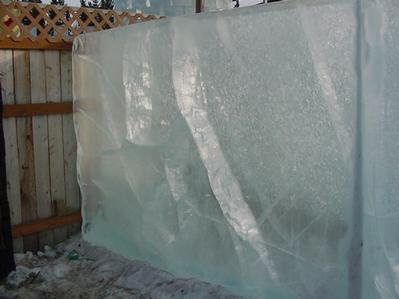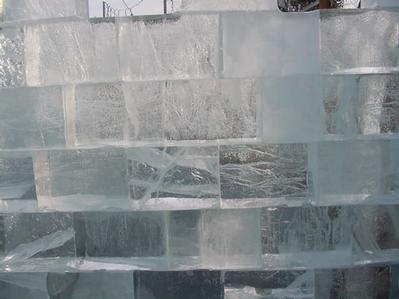2 April, 2002
Weather
Weather: Sunny
High 28
Low -2
Deaf Luncheon
Today, I stayed inside working on data calculations. For lunch, we
joined a group of approximately 15 Deaf and Hard of Hearing residents
for their Tuesday lunch gathering at the Deaf center. The Deaf
community in Fairbanks is quite small compared to Portland.
The Science Behind Ice Fractures
Ice is a solid form of water at freezing point (0 šC or 32 šF). At
this time of year, ice will react to temperature changes by expanding
at warmer temperatures and contracting at colder temperatures. Air
temperatures during the day is just above freezing point, whereas
still below freezing at night. This brings us to 2nd of 4 phase of
this research study.
Phase 1: Below freezing all day, all
night
Phase 2: Above freezing all day, below freezing all
night
Phase 3: Above freezing all day, all night
Phase 4: No snow cover
On frozen ponds, human disturbance and snow depth increase ice
stress. Snow is quite heavy causing a lot of strain on ice. Ice
will eventually crack and water will seep through flowing into the
bottom of the snow cover. Over some time, slush will freeze adding a
new layer of ice on the surface
For Phases 1 through 3, we take our usual measurements to calculate
heat flux as well as ice thickness. Without any snow in Phase 4, we
only measure ice thickness to determine melting process (ice decay).
See below samples of ice fractures.

1. Ice fracture on Jalpertia pond

2. & 3. Stress fractures

3.

4. For every transect, we use either wooden posts or plexiglass tubes (pictured above) as a marker for every 5 meters. These transparent tubes have similar properties to ice and will not progress ice decay around the tubes. In Phase 4, ice surface will be marked on plexiglass tubes to observe ice decay.
Contact the TEA in the field at
.
If you cannot connect through your browser, copy the
TEA's e-mail address in the "To:" line of
your favorite e-mail package.
|
